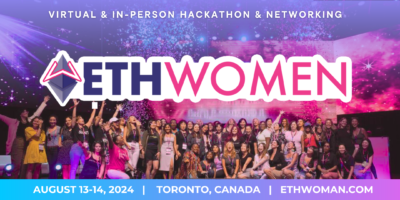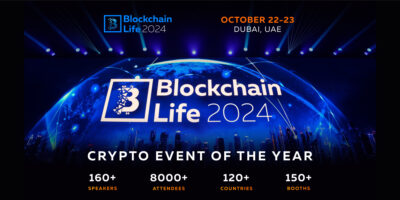Aave DAO recently made an exciting announcement through a tweet, revealing the launch of the highly anticipated AIP (Aave Improvement Proposal) to deploy GHO on the Ethereum Mainnet. This proposal, supported by extensive community discussions and multiple phases of the Aave DAO governance process, aims to revolutionize borrowing on the Aave Protocol by introducing GHO. Let’s delve into the details of this groundbreaking development.
The highly anticipated AIP to deploy @GHOAave on the Ethereum Mainnet is now live.
Voting opens in 24 hours.
Read and discuss here: https://t.co/ygbs2WKE7I pic.twitter.com/Ly16qFe2nY
— Aave (@AaveAave) July 10, 2023
GHO Deployment Proposal and Community Involvement
The Aave DAO’s GHO deployment proposal has generated significant anticipation within the community. After undergoing thorough testing on Ethereum’s Goerli Testnet, GHO is now ready for its debut on the Ethereum Mainnet. However, the final approval lies in the hands of the Aave DAO, with voting set to open in 24 hours.
Empowering Users with GHO
Once approved, Aave V3 users on the Ethereum network will gain the ability to mint GHO tokens against their collateral. This introduces an exciting new chapter for the Aave ecosystem and the Aave DAO. The introduction of GHO is expected to enhance the competitiveness of stablecoin borrowing on the Aave Protocol and drive additional revenue for the DAO. All interest payments made on GHO borrows will be directed to the DAO treasury, strengthening the overall ecosystem.
The Role of Facilitators
A key feature of GHO is the concept of Facilitators. These facilitators, which can be protocols or entities, have the ability to generate and burn GHO tokens up to a specified bucket size. The deployment proposal combines two approved facilitators: the Aave V3 Ethereum Pool Facilitator and the FlashMinter Facilitator. These facilitators play a crucial role in the successful launch of GHO.
Aave V3 Ethereum Pool Facilitator
The Aave V3 Ethereum Pool Facilitator enables depositors to borrow GHO against their collateral within the V3 Ethereum Mainnet Pool. After extensive community discussions and voting, the initial parameters for GHO’s launch with the Aave V3 Ethereum Pool Facilitator have been determined. These parameters include a borrow rate of 1.5%, a bucket capacity of 100 million GHO, and a 30% stkAAVE discount rate.
FlashMinter Facilitator
The FlashMinter Facilitator, another approved facilitator, offers users the ability to FlashMint GHO and repay it in a single transaction. This feature enhances GHO’s ability to maintain its peg and facilitates more efficient arbitrage opportunities. The FlashMinter Facilitator’s initial bucket capacity will be set at 2,000,000 GHO, with no fee paid to the facilitator.
Deployment and Listing on Aave Protocol
Once the proposal is approved, the deployment of GHO’s ERC20 smart contract will be transferred to the Aave DAO. GHO will be listed as a borrowable asset on the Aave Protocol, expanding the range of options available to users. The Aave V3 Ethereum Pool and FlashMinter will serve as the initial facilitators for GHO, enabling users to benefit from this groundbreaking stablecoin.
Conclusion
The Aave DAO’s GHO deployment proposal marks an important milestone in the evolution of borrowing on the Aave Protocol. With the introduction of GHO, users will have the opportunity to mint this stablecoin against their collateral, generating additional revenue for the Aave DAO and strengthening the ecosystem. The facilitators, Aave V3 Ethereum Pool and FlashMinter, play crucial roles in ensuring the successful launch and maintenance of GHO. As the proposal moves forward, the community eagerly awaits the outcome of the voting process, which will shape the future of borrowing on the Aave Protocol.
FAQs (Frequently Asked Questions)
1. What is GHO and how does it revolutionize borrowing on the Aave Protocol? GHO is a stablecoin that aims to enhance borrowing on the Aave Protocol. It allows users to mint GHO against their collateral, enabling them to access additional liquidity. This introduction improves the competitiveness of stablecoin borrowing and generates revenue for the Aave DAO.
2. What is the role of facilitators in the GHO deployment proposal? Facilitators are protocols or entities that have the ability to generate and burn GHO tokens within specific limits. They play a crucial role in maintaining the stability and functionality of GHO. The Aave V3 Ethereum Pool and FlashMinter are the initial facilitators for GHO.
3. How does the Aave V3 Ethereum Pool Facilitator work? The Aave V3 Ethereum Pool Facilitator allows users to borrow GHO against their collateral deposited in the V3 Ethereum Mainnet Pool. The parameters for this facilitator, including borrow rate, bucket capacity, and stkAAVE discount rate, are determined through community discussions and voting.
4. What is the purpose of the FlashMinter Facilitator? The FlashMinter Facilitator enables users to FlashMint GHO and repay it in a single transaction. This feature enhances GHO’s ability to maintain its peg and facilitates more efficient arbitrage opportunities. Users can benefit from the FlashMinter without paying any fees to the facilitator.
5. What happens after the proposal is approved? Once the proposal is approved, the deployment of GHO’s ERC20 smart contract will be transferred to the Aave DAO. GHO will be listed as a borrowable asset on the Aave Protocol, providing users with the opportunity to mint and utilize this stablecoin.








